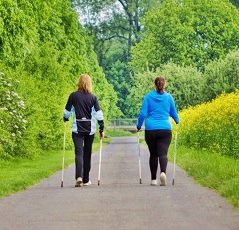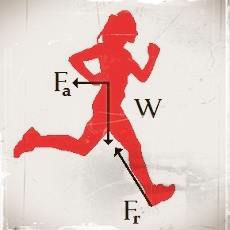Rheumatoid arthritis
Rheumatoid arthritis: symptoms, types, causes, treatment
Fact Checked
×All the content published in our website is fact checked to validate its accuracy.
Visit our guidelines web page to learn more about our strict processes regarding how we review our content's sources: reliable and reputable journals, media websites, universities, colleges, organizations, and professionals.
Our articles are based on scientific evidence, and the references are included in its footnotes, which are clickable links to sound scientific papers.
First published: 16.Sept.2023
Introduction: Rheumatoid arthritis
Rheumatoid arthritis (RA for short) is an autoimmune disease, caused by the the attack of the body's immune system on the joints' lining, leading to a progressive damage.
It is a chronic condition that provokes pain, inflammation, reduced mobility of the joints, and stiffness.
This article will explore the risk factors, symptoms, causes, diagnosis, and the treatment for RA, ranging from conventional medicine to complementary and alternative medicine options.
References and Further Reading
(1) Chou PC, Chu HY, (2018). Clinical Efficacy of Acupuncture on Rheumatoid Arthritis and Associated Mechanisms: A Systemic Review. Evid Based Complement Alternat Med. 2018 Apr 12;2018:8596918. doi: 10.1155/2018/8596918. PMID: 29849731
(2) Zurier RB, Rossetti RG, Jacobson EW, DeMarco DM, Liu NY, Temming JE, White BM, Laposata M., (1996) gamma-Linolenic acid treatment of rheumatoid arthritis. A randomized, placebo-controlled trial. Arthritis Rheum. 1996 Nov;39(11):1808-17. doi: 10.1002/art.1780391106. PMID: 8912502
(3) Verhagen AP, Bierma-Zeinstra SM, Boers M, Cardoso JR, Lambeck J, de Bie R, de Vet HC, (2015). Balneotherapy (or spa therapy) for rheumatoid arthritis. Cochrane Database Syst Rev. 2015 Apr 11;2015(4):CD000518. doi: 10.1002/14651858.CD000518.pub2. PMID: 25862243
(4) Han A, Robinson V, Judd M, Taixiang W, Wells G, Tugwell P., (2019). Tai chi for treating rheumatoid arthritis. Cochrane Database Syst Rev. 2004;(3):CD004849. doi: 10.1002/14651858.CD004849. Update in: Cochrane Database Syst Rev. 2019 Sep 25;9:CD004849. PMID: 15266544
(5) Ye X, Chen Z, Shen Z, Chen G, Xu X. , (2020). Yoga for Treating Rheumatoid Arthritis: A Systematic Review and Meta-Analysis. Front Med (Lausanne). 2020 Nov 27;7:586665. doi: 10.3389/fmed.2020.586665. PMID: 33330545
(6) Ifigenia Kostoglou-Athanassiou, Lambros Athanassiou, Panagiotis Athanassiou, (2020). The Effect of Omega-3 Fatty Acids on Rheumatoid Arthritis. Mediterr J Rheumatol 2020;31(2):190-4, https://doi.org/10.31138/mjr.31.2.190
(7) Pourhabibi-Zarandi F, Shojaei-Zarghani S, Rafraf M., (2021). Curcumin and rheumatoid arthritis: A systematic review of literature. Int J Clin Pract. 2021 Oct;75(10):e14280. doi: 10.1111/ijcp.14280. Epub 2021 May 24. PMID: 33914984
(8) Kou H, Qing Z, Guo H, Zhang R, Ma J., (2022). Effect of vitamin E supplementation in rheumatoid arthritis: a systematic review and meta-analysis. Eur J Clin Nutr. 2023 Feb;77(2):166-172. doi: 10.1038/s41430-022-01148-9. Epub 2022 Apr 25. PMID: 35468933
(9) Menegazzi, M., Campagnari, R., Bertoldi, M., Crupi, R., Di Paola, R., & Cuzzocrea, S. (2020). Protective Effect of Epigallocatechin-3-Gallate (EGCG) in Diseases with Uncontrolled Immune Activation: Could Such a Scenario Be Helpful to Counteract COVID-19? International journal of molecular sciences, 21(14), 5171. https://doi.org/10.3390/ijms21145171
(10) Mur E, Hartig F, Eibl G, Schirmer M., (2002). Randomized double blind trial of an extract from the pentacyclic alkaloid-chemotype of uncaria tomentosa for the treatment of rheumatoid arthritis. J Rheumatol. 2002 Apr;29(4):678-81. PMID: 11950006
(11) Aryaeian N, Mahmoudi M, Shahram F, Poursani S, Jamshidi F, Tavakoli H., (2019). The effect of ginger supplementation on IL2, TNFα, and IL1β cytokines gene expression levels in patients with active rheumatoid arthritis: A randomized controlled trial. Med J Islam Repub Iran. 2019 Dec 27;33:154. doi: 10.34171/mjiri.33.154. PMID: 32280660
(12) Santos, I., Cantista, P. and Vasconcelos, C., (2016). Balneotherapy in rheumatoid arthritis—a systematic review. Int J Biometeorol 60, 1287–1301 (2016). https://doi.org/10.1007/s00484-015-1108-5
(13) Deal CL, Schnitzer TJ, Lipstein E, Seibold JR, Stevens RM, Levy MD, Albert D, Renold F., (1991). Treatment of arthritis with topical capsaicin: a double-blind trial. Clin Ther. 1991 May-Jun;13(3):383-95. PMID: 1954640
(14) Etzel R., (1996). Special extract of BOSWELLIA serrata (H 15) in the treatment of rheumatoid arthritis. Phytomedicine. 1996 May;3(1):91-4. doi: 10.1016/S0944-7113(96)80019-5. PMID: 23194870
(15) Leipner J, Iten F, Saller R., (2001). Therapy with proteolytic enzymes in rheumatic disorders. BioDrugs. 2001;15(12):779-89. doi: 10.2165/00063030-200115120-00001. PMID: 11784210
(16) NIHR National Institute for Health and Care Research, (2021). Special arthritis gloves are no better at reducing pain and stiffness than looser-fitting gloves. 17.12.21 doi: 10.3310/alert_48711.
National Health Service NHS UK. Rheumatoid arthritis. Accessed: 16 Sept. 2023
St. Lukes Hospital. Rheumatoid arthritis. accessed: 16 Sept. 2023
About this Article
Rheumatoid arthritis, A. Whittall
©2023 Fit-and-Well.com, 16 Sept. 2023. Update scheduled for 16 Sept. 2025. https://www.fit-and-well.com/health/rheumatoid-arthritis.html
Tags: arthritis, gout, osteoarthritis, collagen, rheumatoid arthritis, arthritis-osteo, degenerative joint disease, cartilage.





